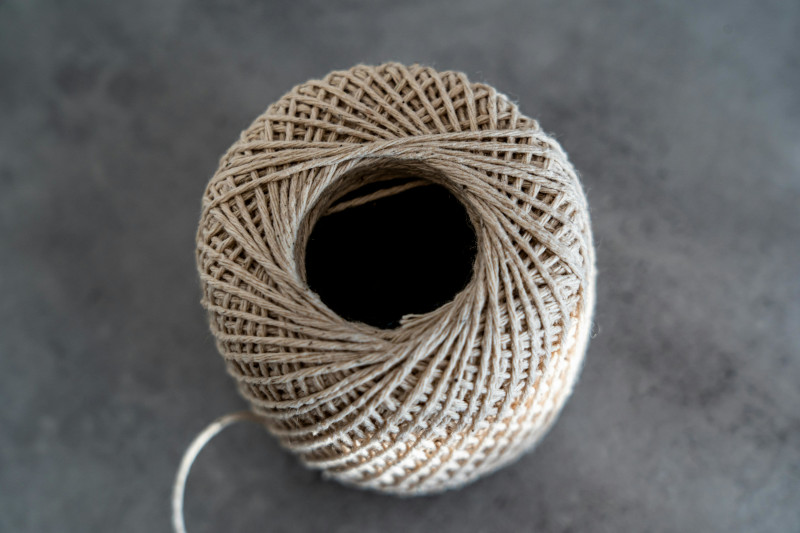Linen Love: Exploring the Ups and Downs of Knitting and Crocheting with Linen Yarn

Linen yarn, derived from the fibers of the flax plant, is an ancient textile that continues to enchant modern knitters and crocheters. Known for its durability and natural beauty, linen offers a distinctive set of characteristics that make it both appealing and challenging to work with. In this article, we delve into the benefits and drawbacks of using linen yarn in your knitting and crocheting projects.
The Lovable Benefits of Linen Yarn
- Exceptional Durability
Linen is one of the strongest natural fibers, making it highly durable and long-lasting. Projects made with linen yarn can withstand significant wear and tear, maintaining their integrity for years. This durability makes linen an excellent choice for items that will see frequent use, such as market bags, dishcloths, and summer garments. - Breathability and Coolness
Linen's natural breathability and moisture-wicking properties make it ideal for warm-weather wear. It keeps the wearer cool and comfortable, making it a perfect choice for summer garments, lightweight shawls, and airy home decor items like curtains and table runners. - Beautiful Drape and Texture
Linen yarn produces a fabric with a lovely drape and a slightly crisp texture that softens beautifully with each wash. The unique texture of linen adds a rustic, natural charm to finished projects, enhancing their visual and tactile appeal. - Hypoallergenic and Eco-Friendly
Linen is hypoallergenic and suitable for sensitive skin, making it a great choice for baby items and clothing for those with allergies. Additionally, linen is eco-friendly. Flax, the plant from which linen is made, requires fewer pesticides and less water compared to cotton, making linen a more sustainable option. - Improves with Age
Unlike many other fibers, linen improves with age and use. With each wash, it becomes softer and more pliable, enhancing its comfort and beauty over time.
The Drawbacks of Linen Yarn
- Initial Stiffness
One of the most notable drawbacks of linen yarn is its initial stiffness. Freshly worked linen can feel rough and rigid, which can be off-putting to some crafters. However, this stiffness diminishes with washing and wear, transforming into a softer, more pleasant texture. - Slippery and Split-Prone
Linen yarn can be slippery and prone to splitting, which can make it challenging to work with, especially for beginners. This characteristic requires careful handling and attention to detail to ensure even stitches and avoid frustrating snags. - Limited Elasticity
Linen lacks the elasticity found in wool and other animal fibers. This can make achieving the correct tension and fit more difficult, particularly for garments that require a lot of stretches, such as socks or fitted tops. Blocking can help to shape the fabric, but the lack of natural elasticity is something to keep in mind. - Cost and Availability
High-quality linen yarn can be relatively expensive and may not be as widely available as other fibers. This can be a barrier for crafters who are budget-conscious or prefer to shop locally. However, the investment in linen often results in a durable, timeless piece that justifies the higher cost. - Care Requirements
Linen items require specific care to maintain their beauty and longevity. While linen is machine washable, it’s best to use a gentle cycle and avoid high heat when drying, as this can cause shrinkage and damage. Some crafters prefer to hand wash and lay their linen projects flat to dry to ensure they last as long as possible. - Hand-winding Is A Must
Linen yarn tangles very easily, so using a ball winder is not the best idea. By hand-winding your linen yarn into a ball you eliminate the risk of tangling at the center. If your linen yarn comes in a skein with a center pull ignore it and start on the outside. Never center-pull linen yarn!
Conclusion
Linen yarn, with its exceptional durability, breathability, and unique texture, offers a rewarding experience for knitters and crocheters seeking to create long-lasting, beautiful projects. Its eco-friendly and hypoallergenic properties further enhance its appeal. However, the initial stiffness, slipperiness, limited elasticity, cost, and care requirements are important considerations. By understanding these pros and cons, you can decide if linen yarn is the right choice for your next crafting endeavor, and perhaps fall in love with its natural charm and enduring qualities.
Sign up for updates from Andrea Crochets and Knits and be the first to know about new patterns, tips, and cozy creations. Get inspiration for your next project—delivered right to your inbox!
Sources:
“10 Questions You Should Ask Before Knitting with Linen Yarn.” (n.d.) Blog.NobleKnits, web. Accessed June 2, 2024.
Unknown. “What Is Linen Fiber? Properties, Structure, and How It Made?” Textile Journal, 18 Oct. 2023, web. Accessed June 2, 2024.
“6 Tips for Working with Linen Yarn – Elizabeth Smith Knits.” Elizabethsmithknits.com, web. Accessed June 2, 2024.
Morgan, Jodie. “Linen Yarn - Guide to This Yarn Material & Best Uses.” Knitlikegranny.com, web. May 16, 2023. Accessed June 3, 2024.